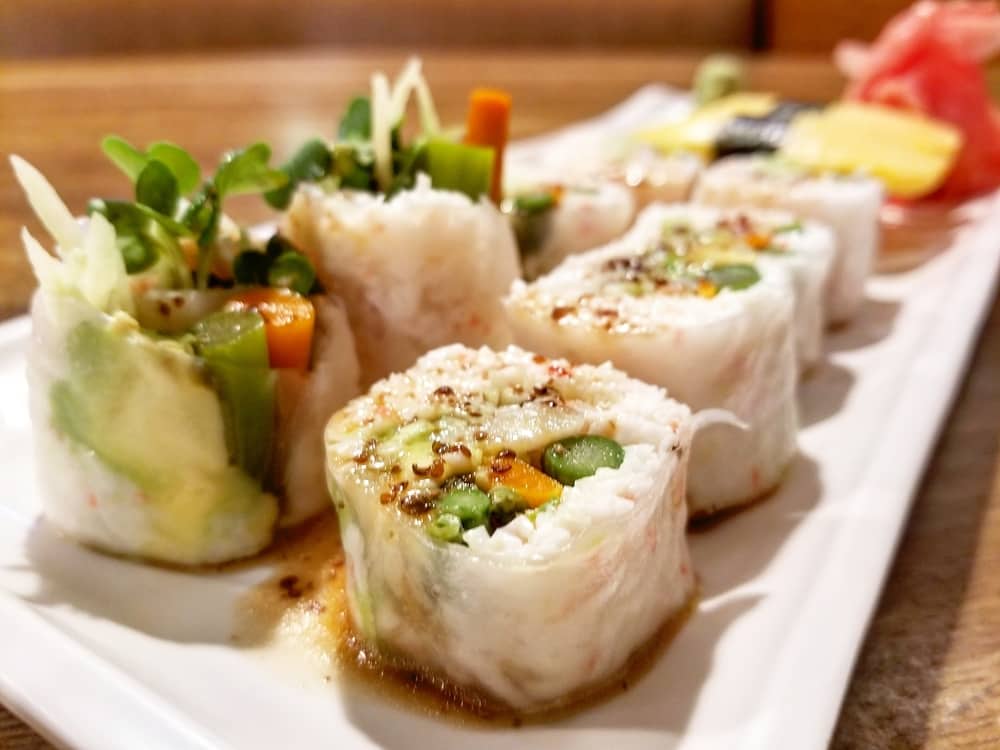
Seafood lovers would be familiar with different types of food wraps, ranging from seaweed to soy paper vs. rice paper. This is because these food wraps are widely used to wrap the fish (yes, just like sushi). So, if you make sushi at home, it’s important to understand the differences between these two types of edible paper and we have all the information in this article!
Soy Paper vs. Rice Paper
Soy Paper
The soy paper is commonly used as a wrap for wrapping the sushi to make sushi rolls. Every ingredient of the sushi is wrapped in this paper. It is made with a variety of ingredients in addition to soy. For instance, it has organic rice paper, sesame seeds, soybean oil, soybeans, and soy flour. However, the ingredients totally depend on the soy paper’s manufacturer. It’s a perfect choice for sushi as compressed soybeans are used to make this paper.
These papers have a flexible and thin nature, which makes it easy to prepare the sushi and you can eat the sushi as well. However, handling the soy paper is challenging as it’s fragile. It is widely compared to nori as the utilization is the same but the ingredients are different. The soybeans are used in the maximum percentage, which is why you don’t feel other ingredients’ flavor. In simpler words, it doesn’t have a weird fishy smell associated with it.
It has a mild aroma, which complements the sushi. The ingredients are mixed and properly ground to make the paste. The paste is then pressed into paper sheets with the help of weight. As far as the flavor is concerned, it’s very mild and the mild hint is of soybeans. Having said that, when it’s made with fish, it allows you to enjoy the freshness of fish. It is usually used as an alternative to nori, which adds a pungent smell to the sushi.
On top of everything, soy paper is perfect for people who are intolerant to gluten. Every sheet has 1g to 2g of carbohydrate, which makes it perfect for people who are following a keto diet. In fact, it has a lower calorie count, making it a healthier choice. Last but not least, if you want to use soy paper for making sushi at home, always stick it with sushi rice to make sure it sticks.
Rice Paper
Rice paper is made from the rice plant’s pith but some varieties are also made from hemp and mulberry – the ingredients are usually labeled on the packaging, so read it if you are conscious about the ingredients. Rice paper has been an important ingredient in Chinese, Japanese, and Asian cuisines. It has a unique texture and a translucent appearance, which makes it a great choice for wrapping up the food ingredients without compromising on the food’s aesthetics.
The edible rice papers are used to wrap food items and the majority of them are made from mulberries (the rice paper from rice plants is quite rare to find). The paper has a slightly crackly, smooth, and thin appearance. In addition, the rice paper of usually dyed with vegetable-based ingredients. Rice paper is also known as washi and can be made from tapioca and rice grains. When put into the mouth, the rice paper simply melts in the mouth.
For this reason, rice paper is widely used in baked goods as well as sweets. It’s also available in a thicker texture, which is used for making spring rolls and dumplings. The amount of rice in the blend directly impacts the transparency of the paper (more fiber results in higher transparency). It is commonly used to wrap the summer rolls, particularly the Vietnamese rolls.
The rice paper has a fragile and brittle texture. In some cases, the paper is soaked in water to make sure it is soft enough to wrap around. The best thing about rice paper is that it doesn’t need cooking after soaking but many people fry it in case you want to make spring rolls. In addition, the rice paper also has milk, banana, and tapioca starch, which improves the texture and flavor.
The Bottom Line
Overall, both these papers are used to wrap the food items, especially seafood, and for making spring rolls. However, you must be careful about handling these papers as they are flexible and break down pretty easily.